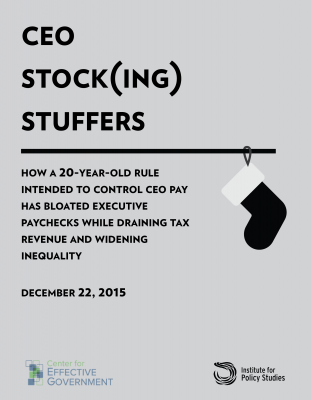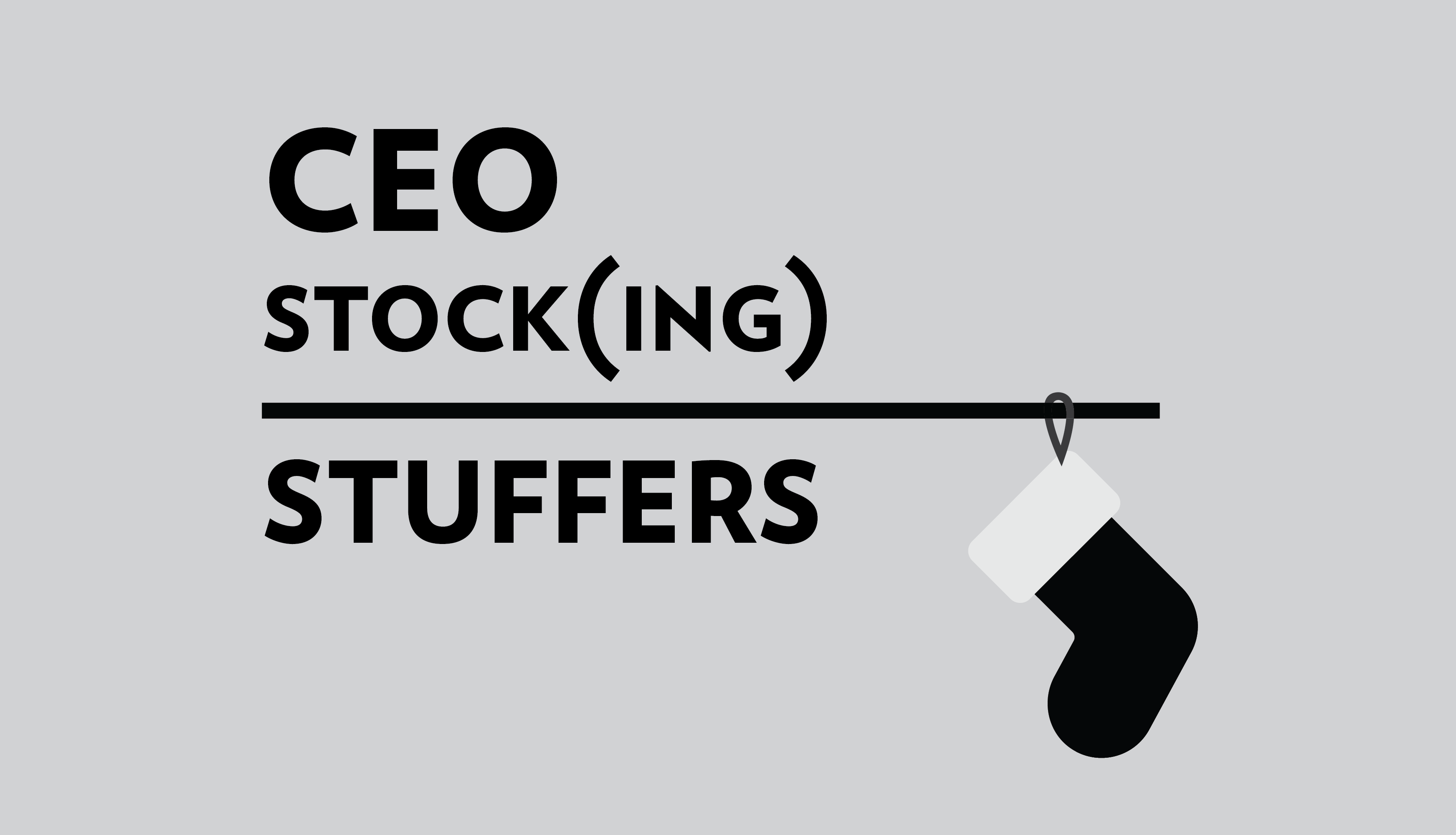 This report, published by the Center for Effective Government and the Institute for Policy Studies, identifies the 10 companies that benefited the most last year from a tax loophole that encourages excessive executive pay.
This report, published by the Center for Effective Government and the Institute for Policy Studies, identifies the 10 companies that benefited the most last year from a tax loophole that encourages excessive executive pay.
The report’s major finding: These 10 corporations cut their 2014 tax bills by more than $182 million through CEO “performance pay” deductions. The largest beneficiary was pharmaceutical company McKesson, where CEO John Hammergren pocketed $112 million in fully deductible stock options and other “performance pay.” This translates into a $39 million taxpayer subsidy.
This loophole was made possible by Section 162(m) of the tax code, initiated on December 20, 1995, which was intended to discourage excessive executive compensation by capping the amount corporations can deduct from their income taxes for executive pay at no more than $1 million per executive. But the law opened a massive loophole by exempting stock options and other so-called “performance pay.” This encourages excessive compensation since it meant that the more corporations pay their CEO, the less they pay in taxes.
The Joint Committee on Taxation estimates that closing this CEO pay loophole would generate $50 billion in revenue over 10 years. The report lists four legislative proposals aimed at fixing this loophole.
